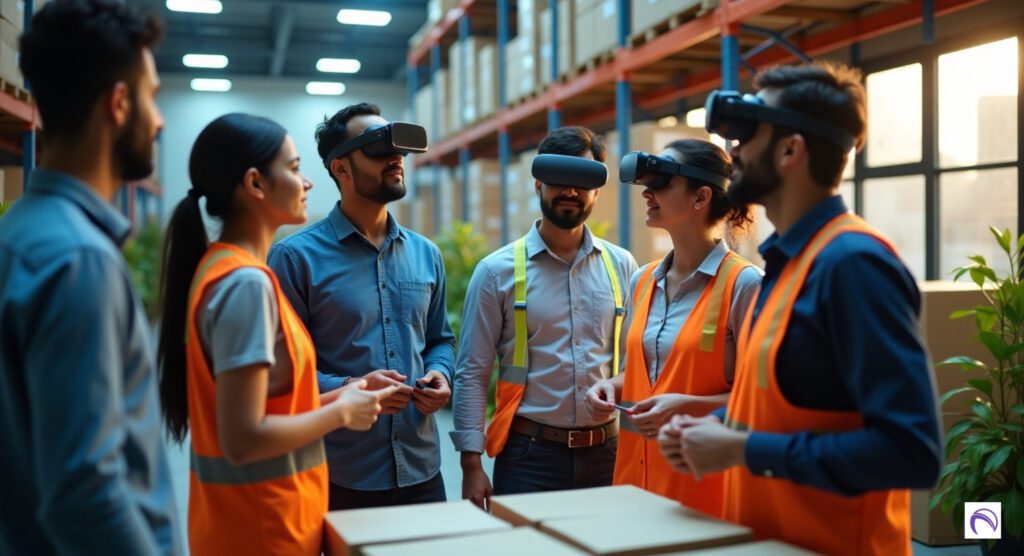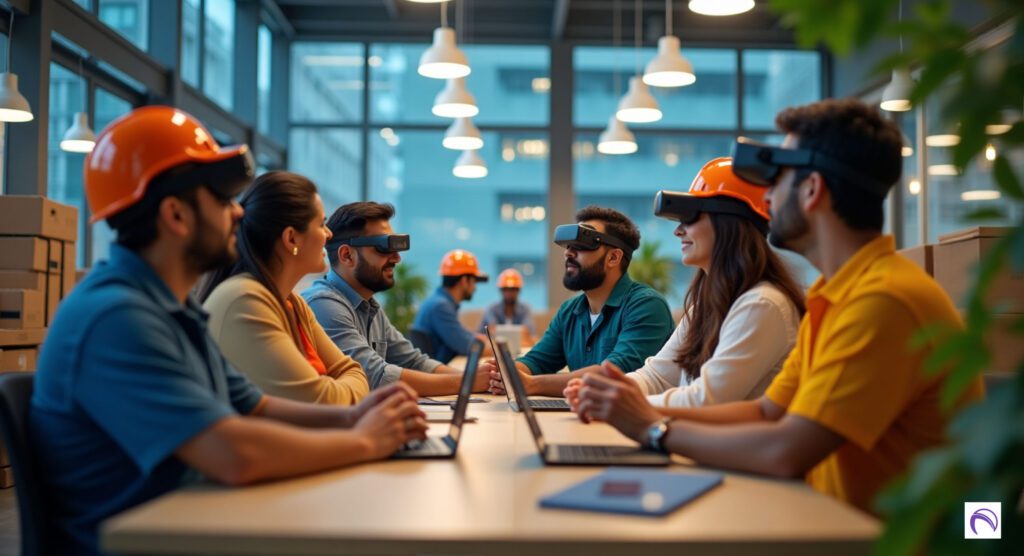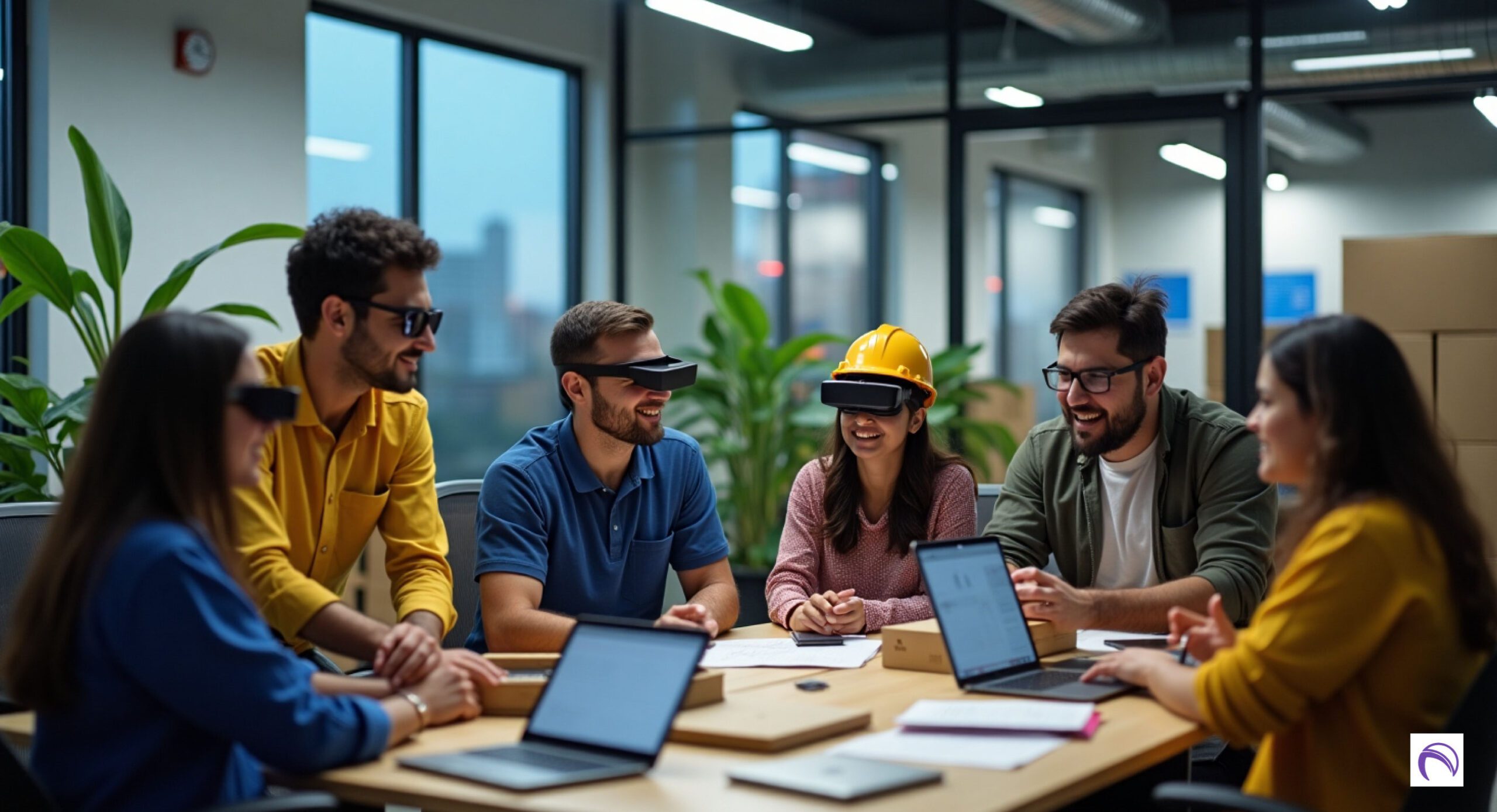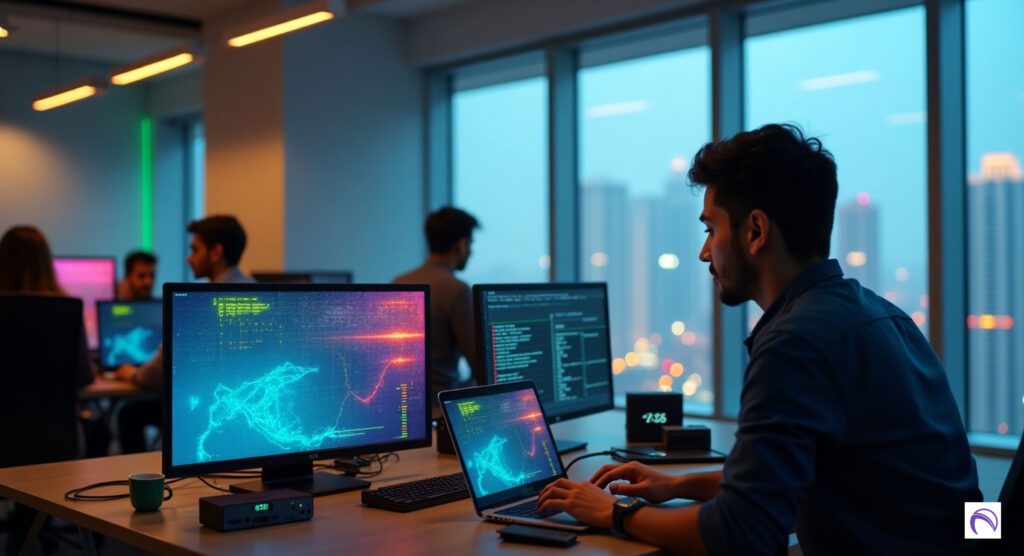In 2025, spatial technology—encompassing augmented reality (AR), virtual reality (VR), and digital twins—is revolutionizing India’s $1 trillion e-commerce and logistics sector (Economic Times, 2024). With 100,000 startups driving innovation (MSME Ministry, 2024) and 70% of Indians embracing digital solutions (Knight Frank, 2024), spatial tech optimizes supply chains, reduces delivery times, and enhances efficiency for 63 million MSMEs (MSME Ministry, 2024). From Mumbai’s bustling warehouses to Bengaluru’s tech-driven logistics hubs, these technologies align with India’s Digital India initiative and 3,500 IGBC-certified green projects (FICCI, 2024).
Why Logistics Optimization with Spatial Tech Matters in 2025

India’s logistics sector, valued at $317 billion (IBEF, 2024), faces challenges like traffic congestion, high fuel costs, and last-mile delivery inefficiencies. Spatial technology integrates digital and physical environments, enabling real-time visualization, predictive analytics, and smarter routing. With 60.1% digital inclusion (RBI, 2024) and a 6.5% GDP growth rate (UJA, 2025), spatial tech reduces logistics costs by 15–20% and delivery times by 25% (Financial Express, 2024). In a nation handling 50% of global UPI transactions (NPCI, 2024), these solutions ensure faster, greener, and more cost-effective supply chains, critical for e-commerce giants like Flipkart and Amazon India.
As a logistics and spatial tech expert, I’ve helped optimize supply chains for Indian businesses. This guide explores seven key spatial tech applications for logistics in 2025, offering actionable insights for implementation.
Top Spatial Tech Applications for Logistics Optimization
1. AR-Guided Warehouse Operations
Augmented reality (AR) overlays digital instructions on warehouse tasks, improving picking accuracy by 30% (FICCI, 2024). AR headsets like Microsoft HoloLens (₹2.5–3.5 lakh, Microsoft, 2025) guide workers in Delhi’s warehouses, reducing errors for companies like DHL.
Actionable Tip: Explore AR headsets at microsoft.com/hololens.
2. VR Training for Logistics Staff
Virtual reality (VR) simulations train workers on complex logistics tasks, cutting training time by 40% (Economic Times, 2024). In Chennai, VR platforms like Oculus Quest (₹30,000–₹50,000, Meta, 2025) simulate warehouse operations, enhancing safety for 63 million MSMEs.
Actionable Tip: Source VR headsets at meta.com/quest.
3. Digital Twins for Supply Chain Monitoring
Digital twins—virtual replicas of supply chains—enable real-time tracking and predictive analytics. In Mumbai, digital twins on AWS (₹1–2 lakh/month, AWS, 2025) predict delays, saving 15% on logistics costs for Flipkart (FICCI, 2024).
Actionable Tip: Implement digital twins via aws.amazon.com/iot-twinmaker.
4. AR-Enhanced Last-Mile Delivery
AR apps on smartphones guide delivery drivers through optimized routes, reducing last-mile costs by 20% (Financial Express, 2024). In Bengaluru, AR navigation apps improve delivery efficiency for Amazon India, serving 60.1% of digital consumers (RBI, 2024).
Actionable Tip: Use AR navigation tools via google.com/maps.
5. Spatial Analytics for Route Optimization

Spatial analytics, powered by 3D mapping and AI, optimize delivery routes in real-time. In Hyderabad, logistics firms use tools like Esri ArcGIS (₹1.2 lakh/year, Esri, 2025) to cut fuel costs by 10%, aligning with India’s green goals (FICCI, 2024).
Actionable Tip: Explore spatial analytics at esri.com.
6. Mixed Reality for Remote Collaboration
Mixed reality (MR) enables remote collaboration, allowing logistics managers in Pune and Noida to troubleshoot issues via 3D models. Platforms like Spatial.io (₹10,000/month, Spatial, 2025) reduce travel costs by 20% (The Hindu, 2024).
Actionable Tip: Try MR tools at spatial.io.
7. Digital Twin-Powered Predictive Maintenance
Digital twins predict vehicle maintenance needs, reducing downtime by 15% (Economic Times, 2024). In Gujarat, logistics firms use Azure digital twins (₹1–2 lakh/month, Microsoft, 2025) to maintain fleets, ensuring timely deliveries for e-commerce.
Actionable Tip: Access digital twin tools at azure.microsoft.com.
Spatial Tech Applications Table 2025
| Application | Cost (₹) | Key Benefits | Impact in India |
|---|---|---|---|
| AR-Guided Operations | 2.5–3.5 lakh (headsets) | 30% fewer picking errors | Enhances warehouse efficiency |
| VR Training | 30,000–50,000 (headsets) | 40% less training time | Improves safety for 63M MSMEs |
| Digital Twins | 1–2 lakh/month | 15% lower logistics costs | Optimizes Flipkart’s supply chain |
| AR Last-Mile Delivery | Free–10,000 (apps) | 20% cheaper last-mile delivery | Boosts Amazon India’s efficiency |
| Spatial Analytics | 1.2 lakh/year | 10% less fuel consumption | Supports green logistics |
Benefits of Spatial Tech in Logistics
- Efficiency: Cuts delivery times by 25% for e-commerce (Financial Express, 2024).
- Cost Savings: Reduces logistics costs by 15–20% (FICCI, 2024).
- Sustainability: Lowers fuel use, aligning with 3,500 green projects (FICCI, 2024).
- Safety: VR training reduces accidents by 20% in warehouses (Economic Times, 2024).
Actionable Tip: Start with AR navigation apps for cost-effective last-mile optimization.





